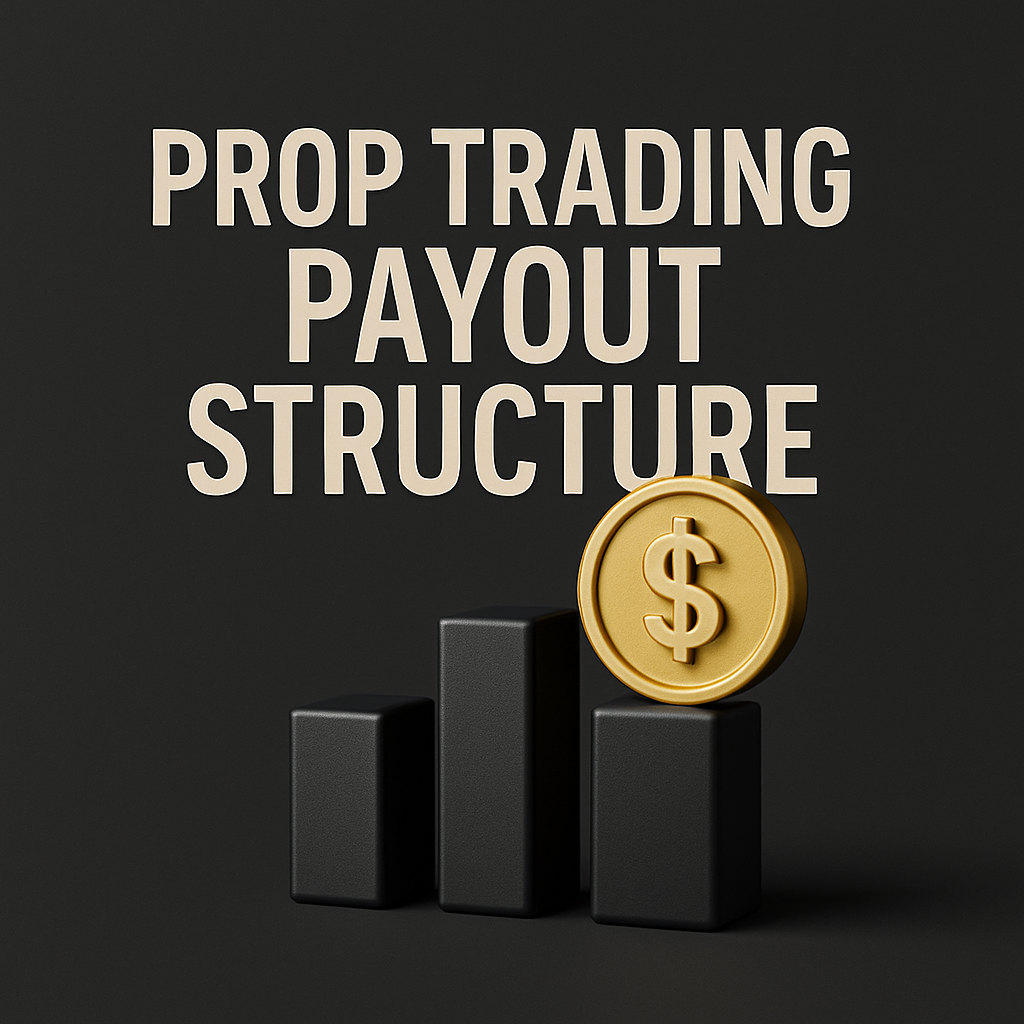Introduction: Understanding Prop Trading Payout Structure
In the world of proprietary trading, few elements are as important to a trader’s success as the prop trading payout structure. Whether you’re a new trader evaluating a challenge or a seasoned professional aiming to maximize returns, understanding how profits are distributed can help you make smarter financial and strategic decisions.
This article explores the different types of payout structures, common schedule setups, and how traders can benefit from aligning their expectations with the right plan.
Why Payout Structure Matters in Prop Trading
At its core, a prop trading payout structure defines how much of the profits a trader is entitled to keep after meeting specific criteria. This could include completing an evaluation challenge, respecting risk limits, and maintaining consistency over a set trading period.
Getting this structure right is crucial for several reasons:
-
Motivation and Performance: Clear incentives lead to better trading discipline.
-
Financial Planning: Knowing your potential income helps manage personal expenses.
-
Trust and Transparency: A predictable structure builds confidence between traders and the firm.
Since payout policies can differ between firms, it’s vital to read the fine print and understand what you’re agreeing to before joining any program. At Larsa Capital, for instance, the payout system is designed to be transparent and trader-focused.
Common Types of Prop Trading Payout Structures
Let’s explore some of the most common models that traders encounter:
1. Fixed Payout Ratio
This is the most straightforward structure, where traders receive a fixed percentage of their profits. For example, an 80/20 split means you retain 80% of what you earn, while the firm keeps 20% for providing the capital and infrastructure.
Benefits:
-
Easy to calculate
-
Predictable income
-
No surprise deductions
2. Tiered Payout System
In this model, your payout percentage increases gradually based on performance or consistency. For example, a trader might start with a set percentage, which improves over time after maintaining consistent profits and meeting key trading milestones.
Benefits:
-
Rewards long-term commitment
-
Encourages continuous improvement
-
Can be tied to account scaling plans
3. Milestone-Based Bonuses
Some structures add bonuses at profit milestones. These can be cash rewards or payout rate increases. For example, reaching $10,000 in total profit may unlock an additional one-time bonus.
Benefits:
-
Enhances motivation
-
Adds flexibility in earnings
-
Good for goal-oriented traders
Scheduling Your Profits: How Payout Timing Works
Beyond the percentage structure, payout schedules are another essential factor. They determine how frequently you can withdraw your profits and whether any conditions apply.
Weekly Payouts
Some firms allow traders to withdraw their earnings weekly after verification. This is often preferred by scalpers and short-term traders.
Biweekly or Monthly Payouts
Most firms, however, set biweekly or monthly withdrawal windows. This helps ensure consistent tracking, compliance, and financial stability on both ends.
Conditions for Payouts
Common conditions before receiving a payout may include:
-
Reaching a minimum profit threshold (e.g., $100)
-
No violations of risk parameters (e.g., max drawdown)
-
Completing a minimum number of trading days
At Larsa Capital, for example, payouts are scheduled every two weeks once conditions are met—balancing fast access with responsible trading behavior.
Key Considerations in Choosing a Payout Structure
To make the most of your trading experience, it’s essential to choose a payout structure that aligns with your goals and strategy. Here’s what to look for:
1. Flexibility and Frequency
If you rely on regular income, opt for more frequent payout options. Make sure to review the timing and minimum withdrawal requirements before committing.
2. Scaling Opportunities
A structure that offers better terms as your profits grow can significantly increase your long-term earnings. Consider firms that reward consistency and growth.
3. Profit Share vs. Service Fees
Always account for any hidden fees or commissions that might affect your net profit. A high profit share can lose its value if paired with excessive costs or rigid rules.
4. Risk vs. Reward Balance
Ensure the payout terms are fair in relation to the capital, rules, and evaluation phases. Unbalanced risk limits or unrealistic targets can diminish the value of even a high payout ratio.
How to Maximize Your Payout Potential
Even with a favorable prop trading payout structure, it’s up to the trader to perform consistently and follow the rules. Here are a few tips to help you make the most of your structure:
-
Stick to your plan: Avoid revenge trading or overleveraging.
-
Track your metrics: Monitor profits, drawdowns, and consistency.
-
Communicate with support: Always stay updated on any payout policy changes.
-
Use trading journals: Record each session to improve performance.
-
Review evaluations carefully: Know exactly when and how your payout eligibility resets.
A Word About Transparency and Trust
Ultimately, a good payout structure is one that is fair, clearly communicated, and consistently applied. Larsa Capital maintains high transparency in its payout terms, providing traders with not just capital—but also clarity.
Before joining any prop firm, always read the full payout documentation. Don’t just focus on the percentage—you need to know when, how, and under what conditions you get paid.
Conclusion
The prop trading payout structure is more than just a profit-sharing agreement—it’s a framework that influences your behavior, motivation, and long-term success as a trader. By understanding the types of structures available, recognizing the conditions tied to them, and aligning them with your strategy, you can create a more predictable and profitable trading experience.
Whether you’re evaluating your first challenge or scaling to a higher level, knowing how your payouts work is a critical part of trading with confidence and clarity.

